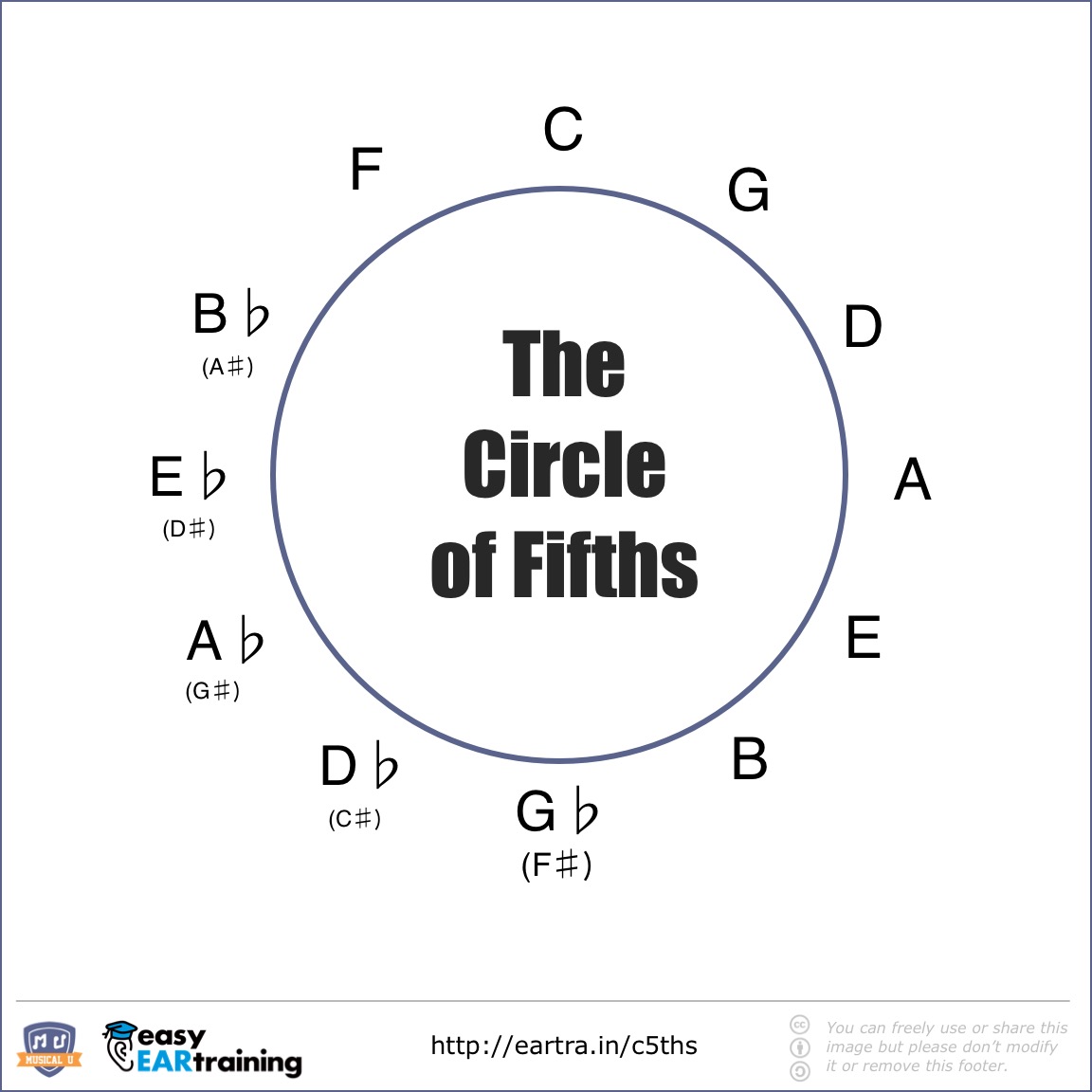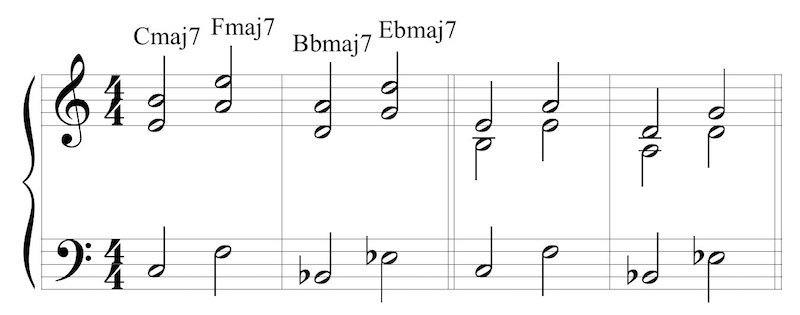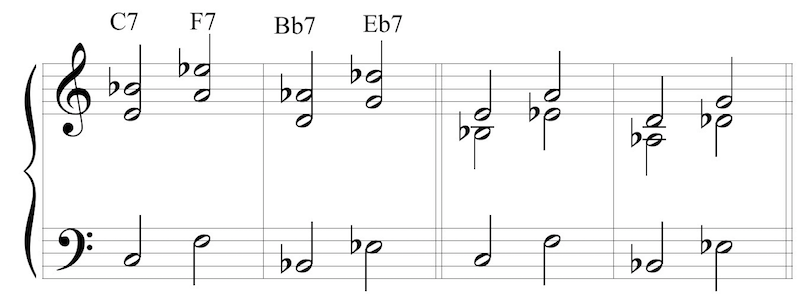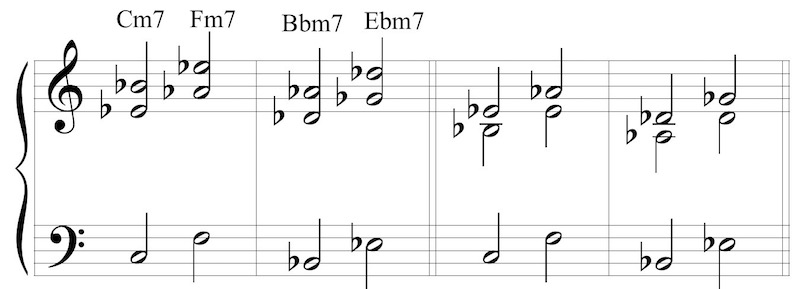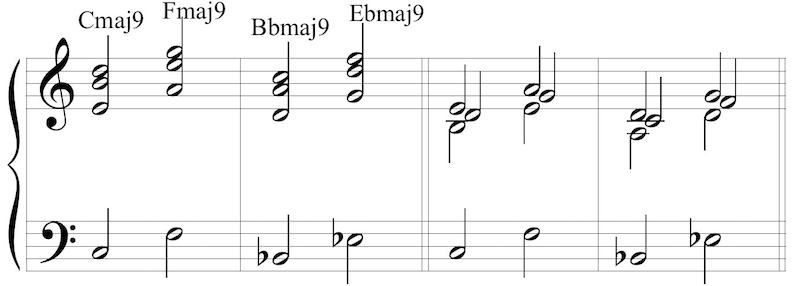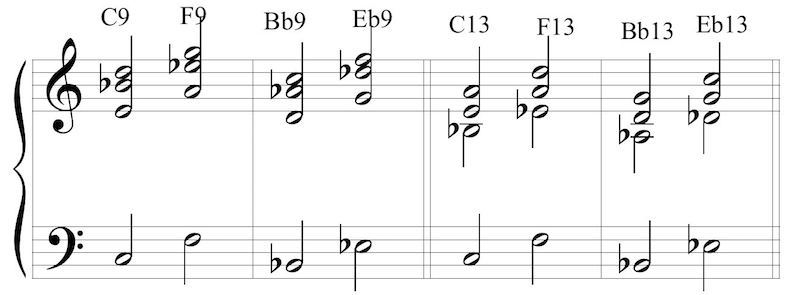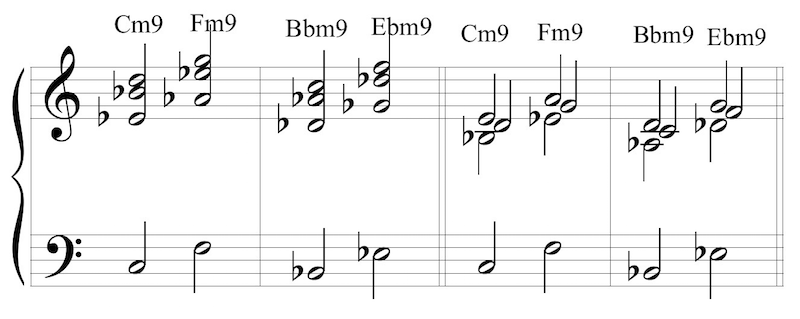This is a guest post by Jeffrey Agrell.
Playing jazz seems from afar as daunting as it is amazing. How could I ever get in on something that… complex? Difficult! I don’t have the time or the talent to ever get to do that! Do I?
Some refrain on that order may echo in the heads of many who have heard a jazz group. Assuming they like what they hear, they reluctantly dismiss the idea of ever getting in on the fun of playing jazz.
It Doesn’t Have to be as Hard as it Sounds!
As with any worthwhile pursuit, there is a learning curve involved with playing jazz, but I am here to pass on the key to getting started with the best possible gain-to-pain ratio. The process described below is illustrated for keyboard, but could be adapted to any chordal instrument. Follow the steps, and you will quickly learn cool funky voicings to the most common chords and chord progressions encountered in jazz.
It may take a few hours or a few weeks, depending on your current level of keyboard skill. But when you’re done you will be able to chord your way through 90% of the tunes in a Real Book.
A Real Book is a collection of standard jazz lead sheets, written out as a melody line with chord symbols.
There are of course many levels of nuance and refinements that can and should be added to this, but these quick formulas will get you started. Once you get going, you may very well be motivated to go deeper into the once-mysterious idea of playing jazz.
Preparation
Key to the signature jazz sound are the skeletal voicings of the chords, emphasizing the 3rd and 7th, and giving new meaning to the quip, “less is more.” We will be learning to play the 3 and the 7 in the right hand, while the left hand plays the root. As is always the practice in jazz, we practice everything in all keys.
The order of keys is C F Bb Eb Ab Db F# B E A D G, following the Circle of Fifths in the flat direction.
Note that every chord is the dominant of the following chord. You are going to see this order a lot when you start reading jazz charts. Memorize this order as soon as you can.
So before you proceed with the steps below, teach your left hand to play this order of 12 notes in the bass by practicing until it comes automatically.
You will see only 2 measures (4 chords) as examples written out, not all the keys. Figure out and learn all the rest of the keys yourself. Do not look at notation (even the couple bars) any more than you have to. We want the knowledge in you, not on the paper. Staring at the notation will actually slow your learning down
Step 1: Major Sevenths
Let’s begin with major seventh chords. Play the root in the left hand. The right hand plays only two notes, the 3 and the 7.
The first two bars show the the 7 over the 3, and the next two show the 3 over the 7.
Note that you only see two measures (four chords) written out in the examples, not all the keys. Figure out and learn all the rest of the keys yourself. Do not look at notation (even the couple bars) any more than you have to. We want the knowledge in you, not on the paper. Staring at the notation will actually slow your learning down.
What you are after is familiarity, i.e. being able to find the 3 notes of each chord very quickly. This takes practice:
- Start with the “7 over 3” voicing in the first two bars
- Do two chords at a time, back and forth, until you can find them quickly and easily, like C to F.
- When you are fluent in that pair, go on to F to Bb. And so on.
- When you can do all pairs of the 12 keys, start again and do three at a time. Then four. Then six. Then all twelve.
- Move on to the “3 over 7” voicing. Repeat 1 through 4.
Step 2: Dominant Sevenths
Once you have mastered the major seventh chords, all you have to do to learn the dominant seventh chords is change one note, like so:
Simply repeat the process described in Step 1 with this lowered 7th.
Once you’ve done the dominant seventh, lower the 3rd and you have the minor seventh chord:
Apply steps 1 and 2.
Step 3: 9ths and 13ths
Step 3 takes what you learned in steps 1 and 2, adding one more note to each chord—usually just putting down the right hand pinky. Very convenient! The function of each chord is the same, but now they are richer and more interesting. Everything else is the same.
Doesn’t that extra note just make you sound totally cool? All you’re doing is adding one note to what you already know really well, the major seventh chords you mastered in Step 1.
By now you know the system. There is one change for the enriched dominant chords, shown below. In the version where the 3 is over the b7, we could have put the 9 next to the 3, but we take advantage of what lies under the fingers to produce a richer, more interesting version of the dominant, the 13th. A 13 is just a dominant that adds a 6th scale degree above the b7. You have certainly heard this before. Now you can play one!
In practice, jazz accompanists select a version of a dominant chord as they go. The dominant function of the chord stays the same, while the sound of the chord differs depending on what extra notes are added. For instance, a C7, C9, and C13 all have the same function and can be interchanged.
Almost done! The last group of chords we’re going to look at is – you guessed it – minor 9ths.
As before, because you mastered the minor 7th chords, it is easy to learn the minor 9ths because you just add the note that is right under your right hand pinky (when b7 is over b3). Piece of cake.
Out of the Woodshed and into the Fire
Be patient. This will all come fairly quickly, but it does take some practice. Speed is a by-product of familiarity with where the notes are. Put in the time and you will get fast (relatively) fast. In short order, you’ll be looking for the nearest jam session!
In the typical rhythm section, the accompanying (a.k.a. comping) pianist—or guitarist—would choose rootless voicings and leave the root to the bass instrument. In other words, just the right hand of the examples here. It takes a little getting used to—not playing the root of the chord—but all you have to do is leave off your left hand and then add some cool rhythms to the right rootless chords, and presto, you are comping!
The Other Ten Percent
With these chords you can play probably about 90% of the jazz tunes that are in the Real Book. What about those crazy looking half-diminished (a.k.a. min7b5), diminished, and augmented chords, as well as altered dominants? No worries. Once your get fluent in the chords we looked at today, you will be able to start in on these and conquer them in record time.
Have fun, and welcome to jazz!


